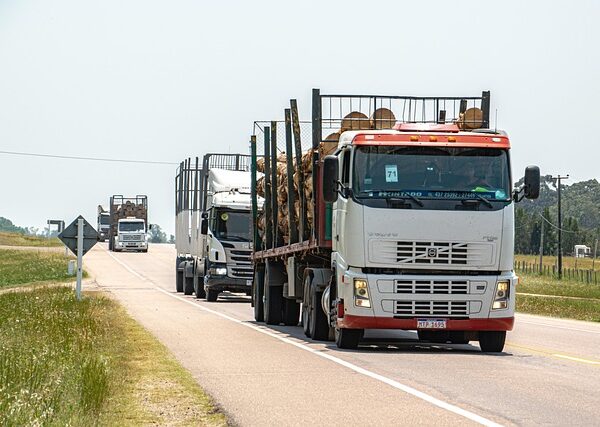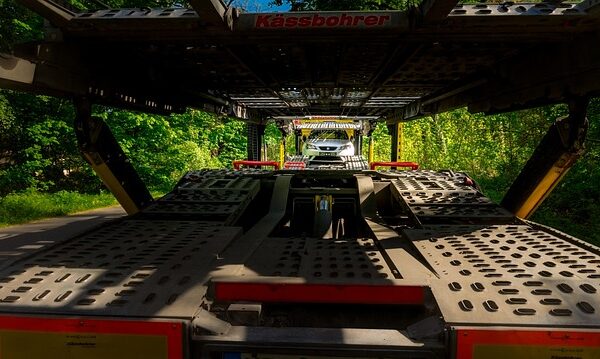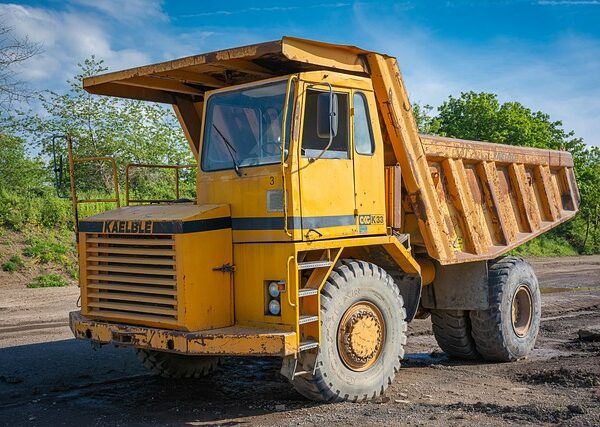DOT Compliance: Navigating Regulatory Excellence
Introduction
In an increasingly interconnected global landscape, ‘DOT Compliance’ stands as a cornerstone for ensuring safety, efficiency, and environmental stewardship in various industries, particularly transportation and logistics. This comprehensive article aims to dissect and demystify DOT Compliance, exploring its historical evolution, global impact, economic implications, technological underpinnings, and future prospects. By delving into these aspects, readers will gain invaluable insights into the critical role this concept plays in shaping modern business practices and international trade.
Understanding DOT Compliance: A Cornerstone of Regulation
Definition: DOT Compliance refers to adherence to the regulations set forth by the Department of Transportation (DOT), a governmental agency tasked with overseeing various modes of transportation, including roads, pipelines, rail, air, and maritime industries in the United States. These regulations are designed to ensure safety, security, and environmental protection across all transportation sectors.
Core Components: DOT Compliance encompasses several key areas:
-
Safety Standards: This involves implementing and adhering to safety protocols for vehicles, drivers, infrastructure, and cargo to prevent accidents and mitigate risks.
-
Environmental Regulations: DOT has stringent rules aimed at minimizing the environmental impact of transportation activities, including fuel efficiency standards, emissions control, and proper disposal of hazardous materials.
-
Security Measures: Ensuring the security of transportation systems, passengers, and freight against potential threats is a critical aspect, especially in the wake of global terrorism.
-
Licensing and Permitting: Businesses operating in the transportation sector must obtain relevant licenses and permits to operate legally, which involves adhering to specific criteria and regulations.
-
Record-Keeping and Reporting: DOT requires detailed records and regular reporting on various aspects, such as accidents, inspections, training, and environmental incidents.
Historical Context: The DOT’s roots can be traced back to the early 20th century when the need for centralized regulation became evident. In 1966, the Department of Transportation was established by President Lyndon B. Johnson, bringing together various transportation agencies under one roof. This consolidation marked a significant step towards modernizing and harmonizing transportation regulations in the United States.
Global Impact and Trends: A World-Wide Web of Compliance
DOT Compliance extends far beyond American borders, with many countries adopting similar frameworks or creating their own based on international standards. This global impact is driven by several key trends:
| Trend |
Impact |
Examples |
| Harmonization of International Standards |
Facilitates smoother trade and travel across borders by ensuring consistent safety and quality levels. |
The United Nations’ (UN) International Organization for Standardization (ISO) sets global standards that many countries, including the US, adopt or adapt for DOT-related regulations. |
| Environmental Focus |
Increasing emphasis on reducing carbon emissions and combating climate change impacts transportation policy worldwide. |
The Paris Agreement, signed by numerous nations, includes targets for cutting greenhouse gas emissions from various sectors, including transport. |
| Digital Transformation |
Technology is revolutionizing compliance through real-time tracking, data analytics, and automated reporting. |
Many countries are implementing digital systems for vehicle registration, licensing, and cargo tracking to enhance transparency and efficiency. |
| Focus on Cybersecurity |
As transportation networks become more interconnected, cybersecurity threats increase, necessitating stringent measures. |
The European Union’s General Data Protection Regulation (GDPR) sets global standards for data privacy and security, impacting how companies handle customer information in the transport sector. |
Different regions have unique challenges and approaches to DOT Compliance:
-
North America: The US and Canada share many DOT-related regulations due to their close economic ties. However, Mexico has its own transportation authority (SCT) with distinct rules and standards.
-
Europe: The European Union’s (EU) internal market ensures a level playing field for transport companies across member states. The EU’s Department of Mobility and Transport sets comprehensive regulations, including the Common Transport Area (CTA) framework.
-
Asia-Pacific: Countries like Japan, South Korea, and Australia have robust DOT-like agencies with strong safety and environmental mandates. China, as a global transportation hub, is developing its regulatory framework to meet international standards.
Economic Considerations: The Numbers Behind Compliance
DOT Compliance has significant economic implications, influencing market dynamics and investment patterns in several ways:
-
Compliance Costs: Businesses must invest in training, equipment upgrades, and technology to meet DOT regulations, impacting operational expenses. According to a 2021 study by the American Trucking Associations (ATA), compliance costs for trucking companies averaged $136 per truck annually.
-
Market Access: Adherence to international standards enables companies to access global markets, fostering trade and economic growth. For instance, meeting ISO 9001 quality management standards can open doors to international clients who require certified suppliers.
-
Investment Opportunities: The focus on infrastructure development, green technologies, and digital transformation creates investment opportunities in the transportation sector. Governments worldwide are allocating significant funds to modernize transport networks, attracting investors.
-
Economic Growth: Effective DOT Compliance contributes to overall economic health by ensuring efficient logistics, reducing accidents, and promoting sustainable practices. A study by the Federal Motor Carrier Safety Administration (FMCSA) estimated that improved safety measures in trucking led to $13 billion in economic benefits in 2018.
Technological Advancements: Revolutionizing Compliance
Technology is at the forefront of transforming DOT Compliance, enhancing efficiency, and improving safety:
-
Internet of Things (IoT): IoT devices enable real-time tracking of vehicles, cargo, and assets, providing data for informed decision-making and improved compliance. For instance, GPS trackers can monitor driver behavior, ensuring adherence to hours-of-service regulations.
-
Data Analytics: Advanced analytics helps identify trends, predict potential issues, and optimize operations. Predictive modeling can anticipate maintenance needs, reducing downtime and ensuring safe vehicle operation.
-
Artificial Intelligence (AI): AI-powered systems automate compliance processes, analyze large datasets, and provide insights for better decision-making. These technologies can detect anomalies in safety records, environmental reports, and financial transactions.
-
Blockchain: This decentralized technology offers secure and transparent record-keeping for supply chain management, making it easier to verify the authenticity of documents and track goods along the transportation chain.
Policy and Regulation: The Regulatory Framework
Several key policies and regulations shape DOT Compliance globally:
United States:
-
Federal Motor Carrier Safety Administration (FMCSA): This agency sets safety standards, enforces hours-of-service rules, and regulates commercial motor carriers.
-
Pipeline and Hazardous Materials Safety Administration (PHMSA): Responsible for regulating the transportation of hazardous materials by pipeline, land, sea, and air.
-
Federal Railroad Administration (FRA): Ensures safety in rail operations, including track maintenance, equipment standards, and worker protection.
Europe:
-
European Commission: The executive body of the EU sets overall transport policy and legislation, ensuring consistency across member states.
-
European Agency for Safety and Health at Work (EU-OSHA): Focuses on promoting safety and health in the workplace, including transportation sectors.
International:
-
International Maritime Organization (IMO): Sets global standards for maritime transport, including safety, security, and environmental protection.
-
International Civil Aviation Organization (ICAO): Responsible for aviation safety, security, and efficiency worldwide.
Challenges and Criticisms: Overcoming Obstacles
Despite its benefits, DOT Compliance faces several challenges and criticisms:
-
Complex Regulations: The sheer volume and complexity of regulations can be overwhelming for businesses, especially small and medium-sized enterprises (SMEs). Simplifying and consolidating rules while maintaining safety standards is crucial.
-
Cost Implications: Compliance costs can be a burden, particularly for smaller companies. Government incentives and subsidies to support compliance efforts are necessary, especially in adopting new technologies.
-
Global Harmonization: While international standardization is beneficial, harmonizing regulations across diverse legal systems and cultural norms remains challenging. Greater cooperation and flexibility among regulatory bodies are required.
-
Cybersecurity Risks: As transportation networks become more digitalized, cybersecurity threats evolve. Robust data protection measures and regular security audits are essential to safeguard sensitive information.
Strategies for Overcoming Challenges:
-
Digitalization of Regulations: Creating digital platforms to simplify access to regulations, provide clear guidance, and offer interactive tools for compliance checks can help businesses navigate the process more efficiently.
-
Public-Private Partnerships: Collaborating with industry experts and businesses can lead to practical solutions for complex regulatory issues. These partnerships can also facilitate the adoption of new technologies.
-
Standardization and Flexibility: Striving for global standardization while allowing for adaptable regulations to accommodate local conditions ensures consistency without hindering innovation.
-
Cybersecurity Collaboration: Industry associations and regulatory bodies should work together to establish best practices, share threat intelligence, and develop robust cybersecurity standards.
Case Studies: Real-World Applications of DOT Compliance
Case Study 1: Trucking Safety in the US
The FMCSA’s initiatives to enhance trucking safety provide a compelling case study. By implementing stricter hours-of-service regulations and introducing advanced driver monitoring systems, the FMCSA reduced fatigue-related accidents by 34% between 2017 and 2019. This success highlights the impact of targeted compliance measures on improving road safety.
Case Study 2: Green Shipping Initiatives
The IMO’s efforts to reduce greenhouse gas emissions from shipping have led to significant innovations. Many major shipping companies are adopting low-sulfur fuel, advanced propulsion systems, and efficient routing to meet IMO regulations. These measures contribute to the global fight against climate change while ensuring sustainable shipping practices.
Case Study 3: Digital Transformation in Rail Transport
European rail operators have embraced digital technology to enhance compliance and efficiency. For example, Germany’s Deutsche Bahn has implemented a comprehensive digital system for real-time tracking of trains, locomotives, and infrastructure, enabling better resource allocation and proactive maintenance planning.
Future Prospects: Navigating the Horizon
The future of DOT Compliance is shaped by emerging trends and technological advancements:
-
Autonomous Vehicles: The rise of autonomous transportation will bring new safety and regulatory challenges. As self-driving cars and trucks become more prevalent, updated regulations will be needed to address liability issues, data privacy, and cybersecurity concerns.
-
Green Transportation: The global push for sustainability will drive the development of eco-friendly transport solutions. Compliance frameworks will need to evolve to support the adoption of electric vehicles (EVs), hydrogen fuel cells, and other low-emission technologies.
-
Data Analytics Integration: Advanced data analytics will become integral to compliance processes, enabling predictive modeling for safety and environmental performance. This shift will demand stronger data protection measures and standardized data sharing protocols.
-
Regional Collaboration: Increased collaboration between regional regulatory bodies can lead to more efficient and consistent DOT Compliance standards, fostering streamlined trade and travel.
Conclusion: Steering Towards a Compliant Future
DOT Compliance is an ever-evolving field that plays a pivotal role in shaping the safety, efficiency, and environmental sustainability of global transportation systems. From its foundational regulations to today’s technological advancements, this concept has come a long way. By understanding its core components, global impact, economic implications, and future prospects, stakeholders can navigate the compliance landscape with greater clarity and purpose.
The challenges and criticisms highlighted in this article offer valuable insights for policymakers, regulators, and industry leaders to collaborate on practical solutions. As technology continues to revolutionize transportation, DOT Compliance will remain a dynamic and essential aspect of modern business practices, ensuring that our global networks remain safe, efficient, and sustainable.
FAQ Section: Answering Common Queries
Q: What is the primary goal of DOT Compliance?
A: The primary goal is to ensure the safety, security, and environmental protection of all modes of transportation while fostering efficient and seamless trade and travel.
Q: How do global standards impact local businesses?
A: Global standards provide a level playing field for international trade but may require adjustments by local businesses to meet new requirements or adopt best practices from around the world.
Q: Can technology completely replace human oversight in DOT Compliance?
A: While technology can automate many compliance processes and enhance efficiency, human expertise remains crucial for complex decision-making, risk assessment, and ensuring ethical practices.
Q: What role does public-private partnership play in DOT Compliance?
A: Public-private partnerships facilitate knowledge sharing, collaboration on regulatory development, and the adoption of innovative solutions, ultimately improving compliance outcomes and efficiency.
Q: How can businesses stay updated with evolving DOT regulations?
A: Businesses should subscribe to industry publications, follow relevant regulatory agencies’ websites, and engage with trade associations to receive updates, guidelines, and best practices for DOT Compliance.
Looking to register your car in California? This comprehensive guide breaks down the process step-by-step, ensuring a smooth experience. From understanding the Vehicle Identification Number (VIN) and…….
Looking to register your car in California? This comprehensive guide breaks down the process step-by-step, from understanding key requirements to choosing the right registration method. We’ll walk you…….
Registering a car in California involves understanding specific requirements and gathering essential documents. This step-by-step guide will walk you through the process, ensuring a smooth experience……..
Looking to register your car in California? This comprehensive guide walks you through every step, from understanding state requirements to securing your vehicle registration. First, familiarize yours…….
Looking to register your car in California? This comprehensive guide breaks down the process step-by-step, from understanding key requirements to choosing the right registration method. Learn how to g…….
Looking to register your car in California? This guide breaks down the process step-by-step, from understanding key requirements to securing your license plate. First, grasp the state’s car registrati…….
Looking to register your car in California? This comprehensive guide breaks down the process step-by-step, from understanding key requirements to completing VIN verification. Gather essential document…….
Looking to register your car in California? This comprehensive guide walks you through every step, from understanding eligibility requirements to obtaining registration plates. Learn about essential d…….
Registering a car in California involves understanding key requirements and navigating a straightforward process. This comprehensive guide breaks down each step, from gathering essential documents for…….
Looking to register your car in California? It’s a straightforward process, but understanding the requirements and gathering the right documents is crucial. This guide walks you through everything fro…….









